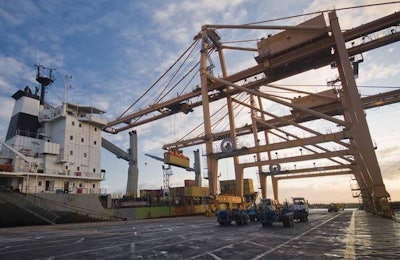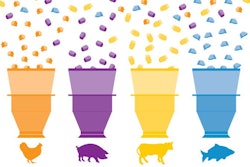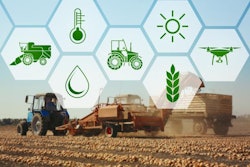
Sales of animal feed in South Africa last year contracted for the first time in the history of the Animal Feed Manufacturers Association (AFMA).
While demand for feed from across livestock sectors was lower, it was from the poultry industry -- accounting for more than 60 percent of sales and hit by growing imports, avian influenza and drought -- that demand was particularly weak, leading to AFMA reporting sales of 6.477 million tons, a decrease of 6.2 percent compared with the year before.
Compounding issues
While 2017 saw demand for broiler feed fall by 5.3 percent last year, and that for layer feed decrease by 3.5 percent, weaker demand for poultry and other feed can be traced back further than 2017.
Demand for livestock feed had been continually growing up until the start of the financial crisis of 2008-09. However, with the downturn, demand began to weaken, with reported sales only rising due to new members joining the association.
In 2012-13 the first real impact on the poultry industry of higher levels of imported broiler meat began to be felt, and the association cites imported chicken meat as continuing to be the biggest threat to the sector. In a double hit, its impact began to be felt at the same times as the agricultural sector faced the worst drought in its history.
Statistics from the country’s Department of Agricultural Economics reveal that, in 2016, South Africa imported 528,506 tons of chicken meat, up from the 437,374 tons in 2015. While imports over the first half of 2017 were 5 percent lower than the same period of 2016, they were, nevertheless, 24 percent higher than the five-year average for the period January to June.
Where the poultry sector is concerned, however, difficulties did not stop there. Demand was further hit last year due to outbreaks of avian influenza and resulting in millions of birds being killed. Up until November of last year, the sector recorded 68 outbreaks, with 21 of these outbreaks occurring on commercial operations.
Avian influenza is thought to have resulted in lost sales of layer feed amounting to 81,000 tons last year, but the biggest threat to feed sales remains that imported broiler meat, with attributed losses being three to four times higher than those attributable to avian influenza.
The association also notes that the biggest contributing factor to the continuous downward trend in demand for broiler breeder feed is also broiler meat imports, followed by better efficiencies, with only a small impact attributable to avian influenza.
2018 improvement
The feed sector is hopeful that 2018 may be more positive. While the challenges of imports and avian influenza have not gone away, overall poultry production has been forecast to grow by 4.78 percent this year, with growth expected in broiler meat and egg production. Demand for broiler breeder feed, however, is expected to continue declining.

After declining last year, demand for broiler and layer feed is expected to grow this year. However, for broiler breeders, decreasing sales are expected to continue.
Hard times continue for South Africa’s poultry industry


















